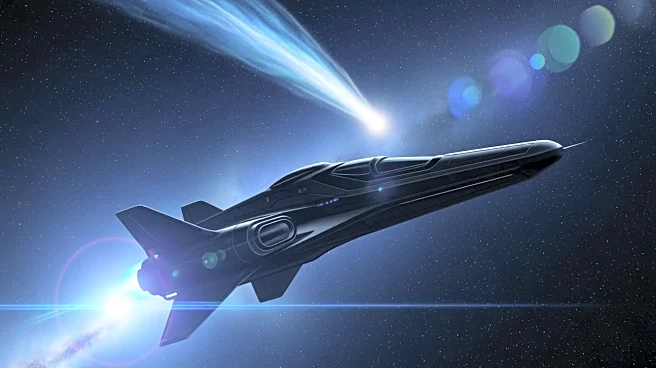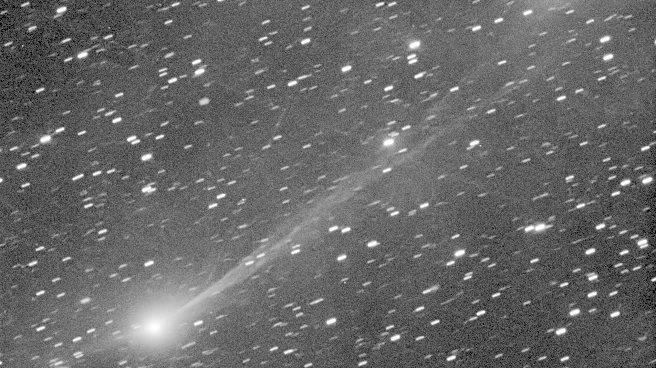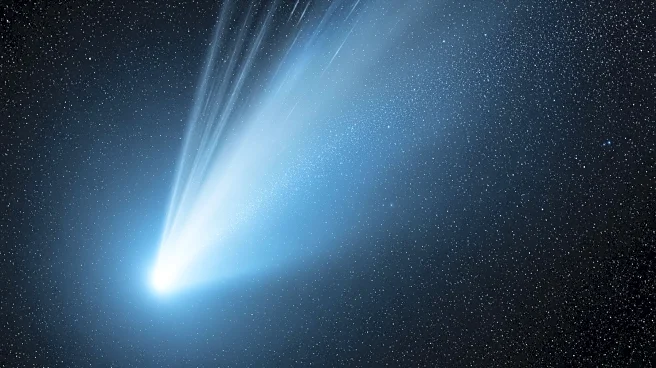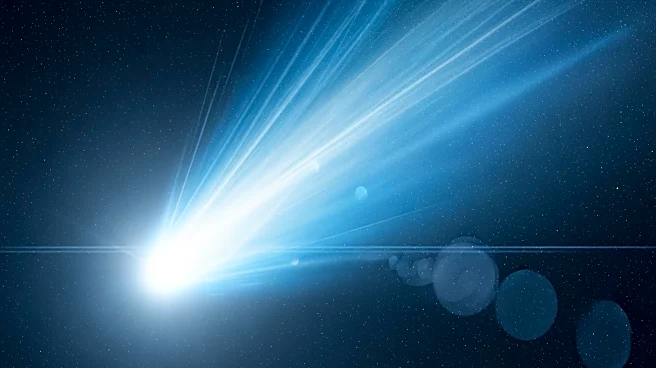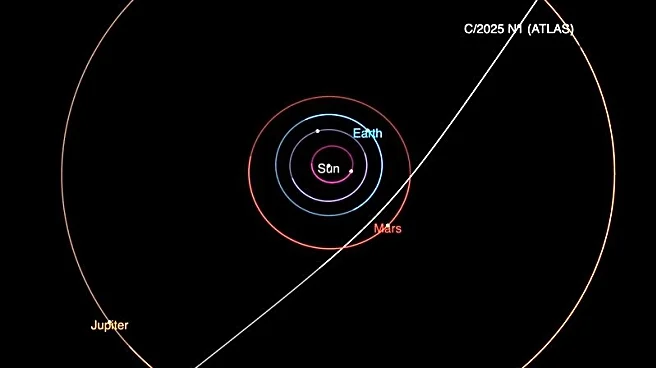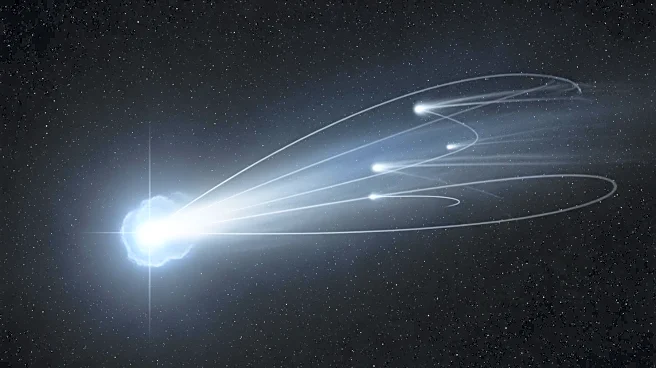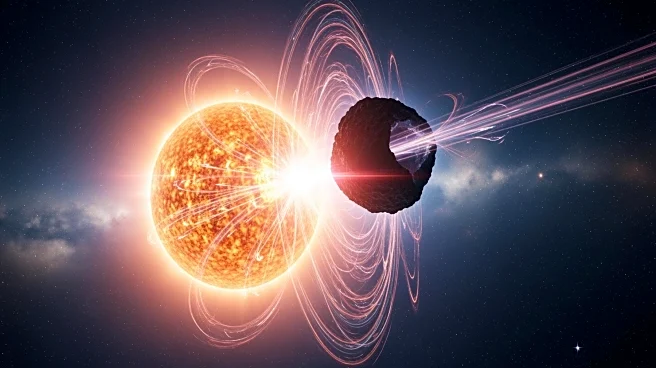What's Happening?
NASA's Lucy spacecraft has captured images of the interstellar comet 3I/ATLAS, marking the third interstellar object detected by astronomers in our solar system. The comet was discovered on July 1 by the ATLAS survey
telescope and was observed by Lucy between September 15 and 17, 2025, as it approached Mars. Lucy's high-resolution imager, L'LORRI, documented the comet from a distance of 240 million miles, capturing its coma and tail. The spacecraft, on its mission to explore the Jupiter Trojan asteroids, coordinated observations with astronomers from the Las Cumbres Observatory in Chile. This collaboration aims to understand the comet's three-dimensional structure and how its dust scatters sunlight, providing a rare opportunity to compare dust from a distant solar system to our own.
Why It's Important?
The imaging of comet 3I/ATLAS by Lucy is crucial for understanding interstellar objects and their characteristics. Such observations can reveal information about the composition and dynamics of comets from other star systems, offering insights into the materials and processes that exist beyond our solar system. The collaboration between NASA and international observatories underscores the importance of global scientific partnerships in advancing space exploration. The data collected from these observations can contribute to the study of cometary physics and enhance the understanding of the solar system's formation and evolution, potentially influencing future space missions and scientific research.
